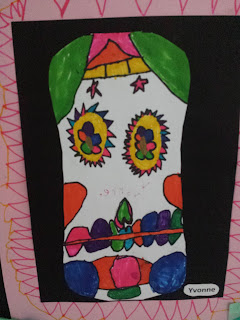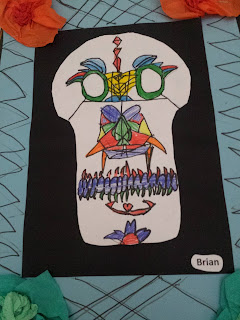My MYP 2/3 class just finished up a unit on Pop Art and Abstract Expressionism, and it was a huge hit! Here is what we have been up to...
Line of Inquiry: Global media has become prominent in new visual cultures.
Inquiry Questions: What types of popular ideas have spread globally? How can pop culture mediums and materials be used in an artwork? Are Andy Warhol's paintings art?
We started off the unit with a class discussion investigating what "Pop Art" is, how it started, and how those ideas are still being used today. The students viewed a variety of pop artists and focused on Andy Warhol.
They did some individual research about Warhol's background and famous works before discussing and debating if his ideas should be considered art. During discussion, the students also identified the elements of art and principles of design within Warhol's famous soup cans.
After research and discussion, students made a list of ten items found in the grocery store. Four of those items were chosen and drawn in their process journals.
After the four items had been sketched, we went backwards in time within the the art history world and began investigating Abstract Expressionism. Why was this art movement happening right before Pop Art started, how is it different? The students examined art works by Willem de Kooning and Mark Rothko, but their favorite was Jackson Pollock.
The students started practicing a variety of mark-making techniques they discovered while looking into Abstract Expressionism in their process journals. We took the mark-making experimenting to the next level by throwing around some paint filled eggs, creating splatters just like Pollock!
After making a brilliantly colorful mess, the students were ready to begin their final task. They chose one item from their four sketches to develop into a design that was influenced by both Pop Art and Abstract Expressionism. Once finished, the students presented their work during a group critique. They were thrilled with their final results!
Here are a few more examples of student work from their beginning ideas up to their final product:
I'm really proud of their enthusiasm, creativity, and effort!
















































